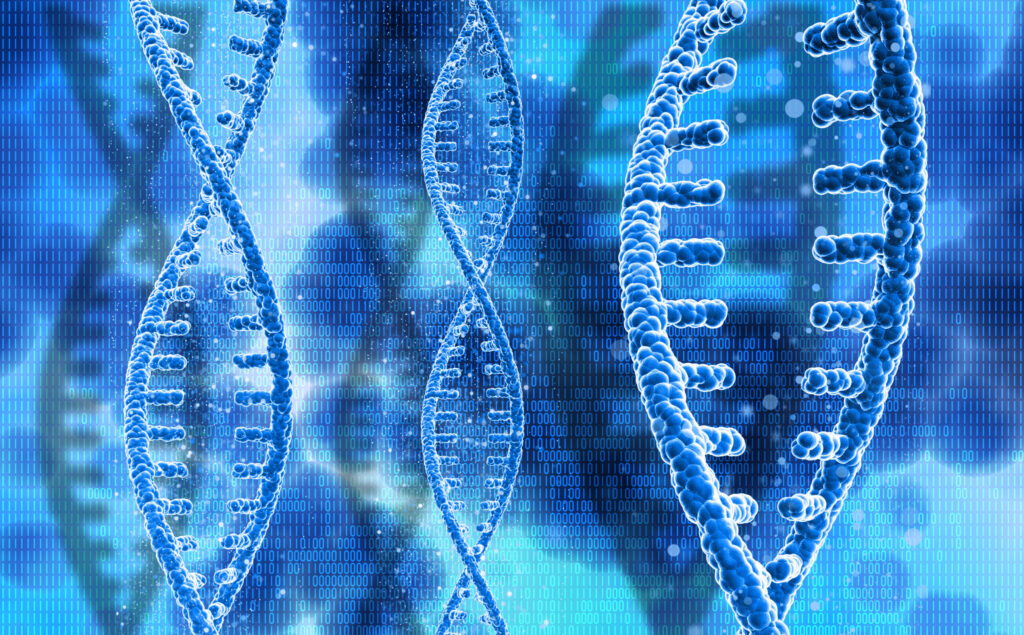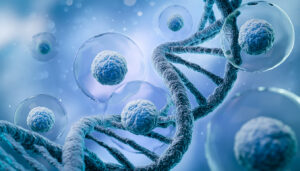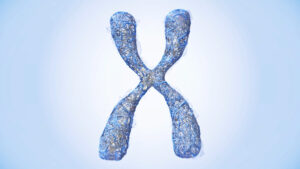What is a chromosomal abnormality?
A chromosomal abnormality affects either the number or structure of chromosomes. This can involve missing or extra chromosomes, or structural changes such as missing parts, duplications, or rearrangements.
A chromosomal abnormality may be inherited (passed down from parents to child) or it may be the result of a new mutation or gene change that occurs during reproduction.
Chromosomes are what store our genes. Genes contain the instructions that affect the way our bodies develop and function.
There are 23 pairs of chromosomes in the human body and 46 chromosomes in total. In each pair of chromosomes, one copy of each chromosome is received from our mother and one from our father.
It is estimated that around 1 in 150 babies born in the US have a chromosomal abnormality. One of the most common chromosomal abnormalities is Down Syndrome, which occurs in approximately 1 in 700 births.
Babies born to mothers of advanced maternal age are considered to be at higher risk for developing this condition.
The Early Signs
- Miscarriage
Miscarriage, which occurs when a developing baby dies in the womb before the 20th week of pregnancy, may be an early sign of a chromosomal abnormality. Some chromosomal abnormalities can lead to miscarriage, and it is estimated that up to 50% of miscarriages are caused by chromosomal abnormalities in the fetus.
2. Stillbirth
The death of a developing baby in the womb after the 20th week of pregnancy may be another early sign of a chromosomal abnormality.
3. Prenatal screening
Some of the earliest identifiable signs of chromosomal abnormalities can now be detected via prenatal genetic screening and testing. The most common of these are designed to identify if a baby is at higher risk of being born with Down syndrome. First-trimester pregnancy screening tests for increased risk for chromosomal conditions. These are generally non-invasive and involve testing the blood of the mother only.
Chromosomal abnormalities can be confirmed, usually in the second trimester of pregnancy, with more invasive forms of prenatal screening. Amniocentesis and chorionic villus sampling are both able to detect some types of chromosomal conditions.
4. Physical features
Advanced ultrasounds during pregnancy are sometimes able to identify some of the physical features of a chromosomal abnormality. In Down syndrome, for example, they may be able to identify before birth the flattened bridge of the nose which characterizes the genetic disorder.
5. Symptoms at birth
Some of the symptoms of a chromosomal condition are identifiable at birth. Unique facial features, for example, and serious health conditions.
Turner syndrome, for example, presents with heart defects and cardiac issues. Other common chromosomal conditions present with such severe symptoms and medical conditions that they may be fatal during infancy. One example of this is Trisomy 13.
Increasing awareness about the early signs of this abnormality is important if we are to improve the diagnosis of chromosomal abnormalities so that we can ensure that those affected by them not only receive an accurate diagnosis but also receive the right care and support as early as possible.



